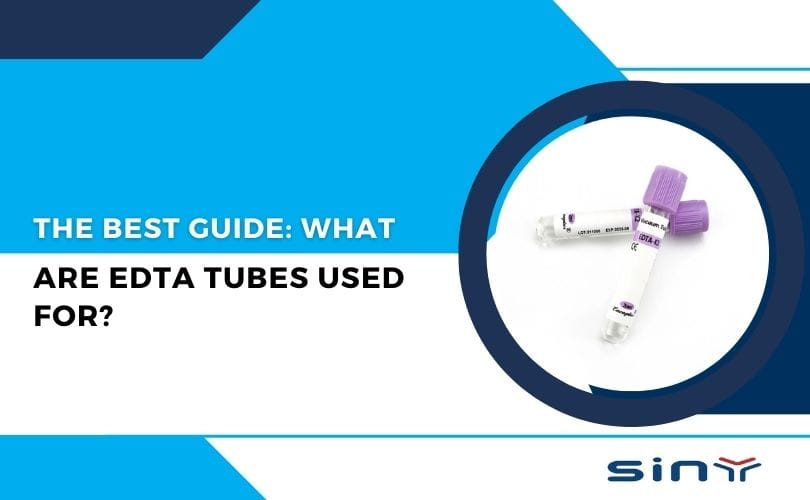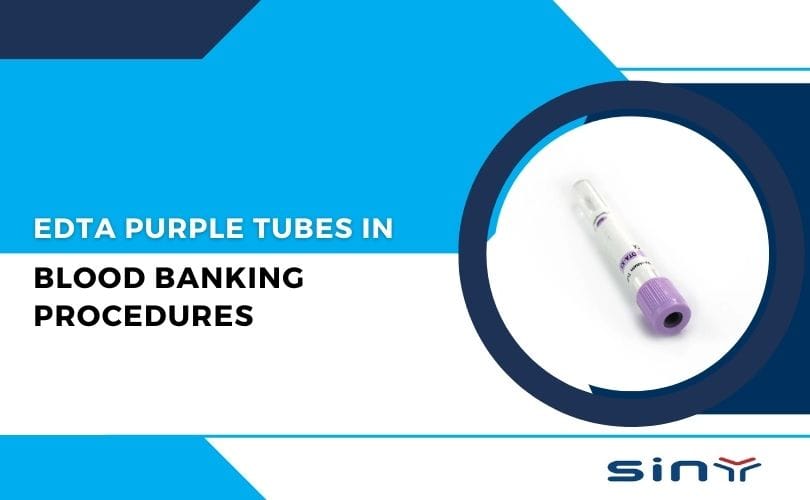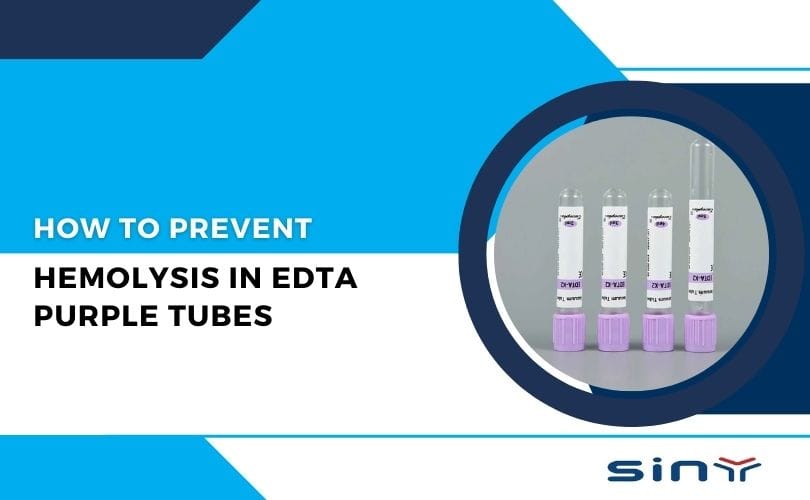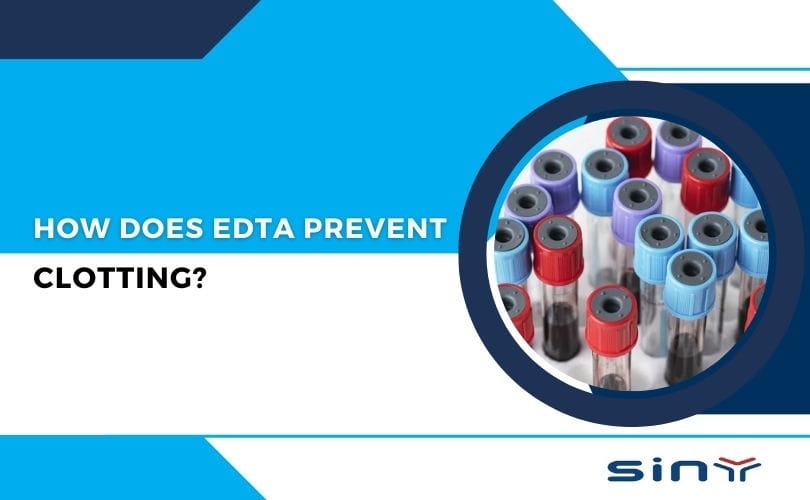EDTA blood collection tubes are indispensable tools in modern medical diagnostics, widely used for hematology tests, HbA1c measurements, and COVID-19 testing. These tubes contain ethylenediaminetetraacetic acid (EDTA), an anticoagulant that prevents blood clotting, ensuring accurate test results. However, understanding their expiration and shelf life is crucial for maintaining the integrity of collected samples and ensuring reliable diagnostic outcomes. This comprehensive guide delves into the intricacies of EDTA blood collection tubes, their shelf life, storage, handling, and expiration considerations.
EDTA blood collection tubes are specialized vacuum-sealed tubes that contain ethylenediaminetetraacetic acid (EDTA) as an anticoagulant. The primary purpose of these tubes is to preserve blood samples by preventing coagulation, allowing for accurate hematological analysis. The EDTA tube comes in different variants, primarily EDTA K2 (dipotassium EDTA) and EDTA K3 (tripotassium EDTA), each serving specific testing requirements.
What Are EDTA Blood Collection Tubes?
EDTA blood collection tubes are specialized medical devices designed to collect and preserve blood samples for laboratory analysis. They are available in various forms, including EDTA K2 and EDTA K3, which differ in their EDTA concentrations and applications. These tubes are commonly used for tests such as complete blood counts (CBC), HbA1c, and viral load assessments.
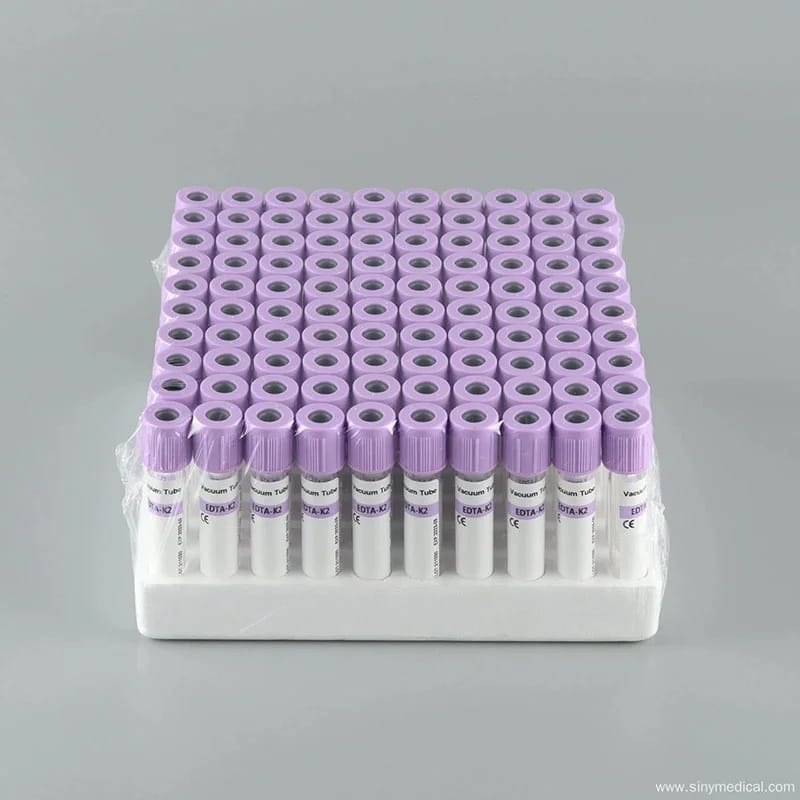
They are primarily used for:
Hematology testing (CBC, WBC count, RBC morphology)
HbA1c monitoring
ESR testing
PCR-based infectious disease diagnostics
DNA and RNA preservation
The tubes are manufactured under strict quality standards to ensure consistency and reliability. For instance, Siny Medical, a leading manufacturer, produces high-quality EDTA tubes that meet international medical standards. You can explore their range of products here.
Understanding Expiration Dates
Every EDTA blood collection tube comes with an expiration date, which indicates the period during which the tube is guaranteed to perform optimally. This date is determined based on rigorous stability testing conducted by manufacturers.
Why Expiration Dates Matter:
- Chemical Stability: Over time, the EDTA anticoagulant may degrade, reducing its effectiveness in preventing blood clotting.
- Tube Integrity: The vacuum inside the tube may weaken, affecting blood draw accuracy.
- Sample Quality: Expired tubes can compromise the integrity of blood samples, leading to inaccurate test results.
For example, the EDTA Vacuum Blood Collection Tube for HbA1c Test has a clearly marked expiration date to ensure optimal performance.
Standard Shelf Life of EDTA Blood Collection Tubes
Most manufacturers specify an average shelf life of:
📌 18 to 24 months (from manufacturing date)
This applies to both:
K2 EDTA Tubes
K3 EDTA Tubes
You can review specific product specifications here:
Factors That Influence Shelf Life Before Expiration
Even if the tube hasn’t reached its printed expiration date, storage conditions dramatically affect its lifespan.
Temperature Exposure
Ideal storage temperature:
4°C – 25°C (39°F – 77°F)
Temperatures above 25°C increase additive degradation and accelerate vacuum loss.
For proper lab storage guidance, refer to:
👉 EDTA Tube Storage & Handling Guide
Humidity Levels
High humidity (over 55–60%) can:
Damage tube labels
Cause stopper swelling
Affect tube sterility
Low humidity can cause:
Additive drying
Crystalline precipitation inside the tube
UV and Light Exposure
Direct sunlight reduces EDTA stability.
UV exposure can damage the tube’s plastic polymer, causing micro-cracks.
Transportation and Vibration
Excessive shaking or vibration before use may cause micro-foam of additives or cap loosening.
Manufacturers such as SINY Medical explain more via their educational content:
👉 www.youtube.com/@sinymedical
Standards and Regulations: The Foundation of EDTA Tube Quality
The reliability of EDTA Blood Collection Tubes is not arbitrary; it is built upon a framework of stringent international and national standards. These regulations dictate the testing procedures for shelf life determination and ensure manufacturing quality.
International Organization for Standardization (ISO)
Manufacturers like Siny Medical strictly adhere to international quality and performance standards.
ISO 13485:2016: This is the international standard for quality management systems (QMS) specific to medical devices. Compliance with ISO 13485 ensures that the processes for design, manufacturing, and stability testing of our tubes—such as the Siny Manufacturer Disposable Virus Vacuum EDTA K2/K3 Tube—are robust and consistent, which directly supports the validity of the stated shelf life.
ISO 6710: This standard specifically addresses single-use containers for human venous blood specimen collection, outlining material, dimensions, and color-coding requirements. It also mandates that tubes maintain their essential properties (including anticoagulant efficacy and vacuum integrity) until the expiration date.
US Food and Drug Administration (FDA) and CLSI Guidelines
In the US market, and for manufacturers exporting globally, the FDA’s Quality System Regulation (21 CFR Part 820) governs the manufacturing process, labeling, and shelf life studies of blood collection devices.
Labeling and Expiration: FDA mandates that labels include the expiration date, which is determined by the manufacturer based on comprehensive real-time or accelerated stability studies. This ensures the product’s safety, purity, and potency are maintained.
CLSI H1-A6: The Clinical and Laboratory Standards Institute (CLSI) document H1, “Tubes and Additives for Venous Blood Specimen Collection,” provides detailed specifications for additives like EDTA and the performance criteria for the tubes, including minimum fill volumes and closure characteristics that must remain stable throughout the shelf life.
EDTA Tubes and the Role in Modern Testing (e.g., COVID-19)
The rigorous standards for EDTA Blood Collection Tubes became even more critical during events like the COVID-19 pandemic. While EDTA is primarily for hematology, the use of whole blood or plasma collected in EDTA tubes is vital for various molecular and serological tests. Our comprehensive article on EDTA Blood Collection Tubes in COVID-19 Testing details their essential role. For these complex molecular assays, the stability and efficacy of the anticoagulant throughout the tube’s shelf life, and the subsequent short-term sample stability, are non-negotiable prerequisites for reliable diagnostic outcomes.
What Happens When You Use an Expired EDTA Tube?
Using an expired tube can lead to critical errors in blood analysis. Here’s what can go wrong:
Inaccurate CBC Parameters
Expired tubes cause:
Platelet clumping
Hemolysis
Abnormal MCV, MCH, and RDW
Pseudoleukocytosis
These false readings may lead to incorrect clinical decisions.
Clot Formation
Weak EDTA additive fails to prevent clotting, making the sample unusable.
Poor HbA1c Accuracy
HbA1c relies on precise whole blood preservation.
Expired tubes distort long-term glucose monitoring.
For HbA1c-specific tubes: EDTA HbA1c Tube
PCR and Molecular Test Failure
Expired tubes can break down DNA/RNA or introduce contamination.
This is especially important in infectious disease testing—like COVID-19 diagnostics:
EDTA Tubes in COVID-19 TestingInsufficient Sample Volume
Vacuum loss leads to a “short draw,” which changes blood-to-anticoagulant ratio.
This results in:
False clotting
Hematology analyzer errors
Rejected samples
Manufacturers’ Shelf Life Comparison (Table)
| Manufacturer | EDTA Type | Shelf Life | Notes |
|---|---|---|---|
| SINY Medical | K2/K3 EDTA | 24 months | High sterility, used globally |
| BD | K2EDTA | 18–24 months | Industry standard |
| Greiner Bio-One | K2EDTA | 24 months | Premium polymer design |
| Generic OEM | Mixed | 12–18 months | Varies by storage conditions |
For certified EDTA tubes, visit: EDTA Tube Products.
How Improper Storage Accelerates Tube Expiry
Let’s break down exactly how storage impacts tube stability.
Heat Exposure (Above 25°C / 77°F)
Heat accelerates:
Polymer degradation
Additive clumping
Loss of vacuum pressure
Sterility risk
Labs in tropical regions must pay extra attention to climate-controlled storage.
Follow proper storage guidelines: EDTA Tube Storage Best Practices
Cold Exposure or Freezing
Freezing temperatures cause:
EDTA crystalization
Tube cracking
Stopper hardening
Never store EDTA tubes below 0°C.
Light Exposure
UV radiation directly damages the tube material.
Sunlight causes:
Microscopic cracks
Weakening of the tube wall
Additive breakdown
Therefore, tubes should be stored in a closed box or drawer.
Humidity Problems
High humidity leads to:
Moisture penetration into additive
Stopper swelling
Label peeling (risking misidentification)
Low humidity causes:
Powder caking
Electrostatic buildup in the tube
Summary
EDTA blood collection tubes are vital for accurate medical diagnostics, but their expiration and shelf life must be carefully managed to ensure sample integrity. Proper storage, handling, and adherence to expiration dates are essential for optimal performance. By understanding these factors, healthcare professionals can maintain the reliability of diagnostic tests and improve patient outcomes.
For more information or to purchase EDTA tubes, visit EDTA Tube or contact us here.
FAQs
Q1: What is the average shelf life for a new EDTA blood collection tube?
A: The average shelf life for a high-quality, new EDTA blood collection tube is typically 12 to 24 months from the date of manufacture. The exact duration is determined by the manufacturer based on rigorous stability and vacuum integrity testing, and it is clearly marked as the expiration date on the tube label and packaging.
Q2: What is the main component of an EDTA tube that can degrade over time?
A: The most critical component subject to degradation that limits the shelf life of a vacuum tube is the vacuum seal integrity. Over time, especially if exposed to high temperatures, the slight permeability of the plastic tube material (PET) or the seal of the rubber stopper can lead to a gradual loss of vacuum. This loss compromises the intended blood-to-anticoagulant ratio, leading to potential sample errors like short-draw and incorrect test results (e.g., falsely high MCV).
Q3: What happens if I accidentally use an expired EDTA tube?
A: Using an expired tube is a critical pre-analytical error. The primary risks are:
Inaccurate Blood Draw: Due to a potentially depleted vacuum, the tube may short-draw, resulting in a ratio of too much EDTA to too little blood.
Cellular Damage: Excess EDTA causes red blood cells to shrink (crenation) and white blood cell morphology to change, leading to falsely high MCV and inaccurate CBC differential counts. Always check the expiration date and use the FIFO (First-In, First-Out) method for inventory.
Q4: How long can whole blood collected in an EDTA tube be stored before testing?
A: For most routine hematology tests (like CBC), the whole blood sample should be processed within 6 to 8 hours at room temperature ($\sim 20^{\circ}\text{C}$) for the most accurate results. It can often be stored at refrigerated temperatures ($2^{\circ}\text{C}$ to $8^{\circ}\text{C}$) for up to 24 to 48 hours, but this is test-dependent. After 24 hours, changes in cellular parameters become clinically significant. For molecular assays (DNA), samples can sometimes be refrigerated for up to 7 days.
Q5: Can I refrigerate or freeze EDTA blood collection tubes before use?
A: Before use, EDTA tubes should be stored at the manufacturer’s recommended temperature, typically 4°C to 25°C. Refrigeration is usually acceptable, but freezing unopened tubes is generally not recommended as extreme cold can potentially damage the tube’s structural integrity or the seal. Never freeze whole blood collected in an EDTA tube, as this causes cell lysis (rupture) and invalidates hematology results.


